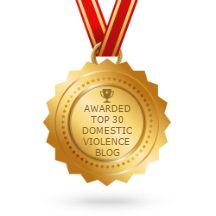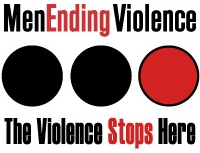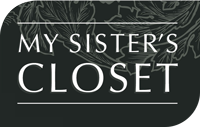Last month, Canada commemorated the second National Day for Truth and Reconciliation. However, there is still so much truth for Canadians to learn and acknowledge about residential schools and colonialism in Canada. This must be part of an ongoing process and decolonial commitment. We all must learn about the residential school system in Canada, reflect on the ongoing impacts of colonization in our society, and think and act with intentionality, accountability, and integrity about what Truth and Reconciliation means to each of us.
A Brief History of Residential Schools in Canada
Created with the goal of assimilating Indigenous children into Canadian society, residential schools were a crucial part of Canadian policy to displace and dispossess Indigenous peoples from their cultures, languages, and lands. Residential schools operated in Canada from 1831 until 1996 and as such, affected multiple generations of Indigenous families. Over 150,000 Indigenous children were forcibly and violently removed from their parents and sent to residential schools at over 140 locations across the country. At the “schools,” which were more akin to prisons, children were stripped of their languages and cultures. Thousands of children experienced physical and sexual violence. Most of the perpetrators of this violence – many employed, represented, and protected by churches – were never convicted of these grievous offenses against innocent children. Thousands of Indigenous children died in the residential school system, the bodies of whom are still being recovered on the sites of former residential schools.
Most of the perpetrators of this violence – many employed, represented, and protected by churches – were never convicted of these grievous offenses against innocent children.
Justice Murray Sinclair (Mizana Gheezhik) writes “The residential school system established for Canada’s Indigenous population in the nineteenth century is one of the darkest, most troubling chapters in our nation’s history… Removed from their families and home communities, seven generations of Aboriginal children were denied their identity through a systematic and concerted effort to extinguish their culture, language, and spirit. The schools were part of a larger effort by Canadian authorities to force Indigenous peoples to assimilate by the outlawing of sacred ceremonies and important traditions. It is clear that residential schools were a key component of a Canadian government policy of cultural genocide.”
The Truth and Reconciliation Commission of Canada
Established in 2008, the Truth and Reconciliation Commission of Canada (TRC) was created as one of the elements of the Indian Residential School Settlement Agreement, with a mandate to document residential school experiences across Canada. From 2010 to 2014, the commission held hearings in communities throughout the country, and, in doing so, heard from over 6500 witnesses to the atrocities of residential schools.
In December 2015 the TRC released its final report, containing 94 Calls to Action across child welfare, education, language and culture, health, and the justice system. The Calls to Action also offer guidance on reconciliation in terms of church apologies, media, UNDRIP, youth programs, sports, museums, and archives. Notably, and especially with the recent tragic discoveries of bodies of Indigenous children found on residential school grounds across the country, the Calls to Action also offers six recommendations to federal and provincial governments and agencies on the deaths and burials of Indigenous children on residential school grounds.
BWSS encourages those interested in learning more about residential schools to familiarize themselves with the Executive Summary and the 94 Calls to Action of the final report of the Truth and Reconciliation Commission of Canada.
Today’s Residential Schools
As just one component of state-sanctioned colonial violence against Indigenous peoples, residential schools have left a legacy of intergenerational trauma on Indigenous families and communities. Indigenous author Melissa Mbarki writes, “We transitioned children out of residential schools and into federal and provincial institutions, such as prisons and foster homes.”
Canadians commemorating the National Day for Truth and Reconciliation and learning about the residential school system should know that the modern child welfare system is an extension of the residential school system.
Canadians commemorating the National Day for Truth and Reconciliation and learning about the residential school system should know that the modern child welfare system is an extension of the residential school system. According to the TRC, “Canada’s child-welfare system has simply continued the assimilation that the residential school system started.” There are more children in the custody of child welfare agencies now than were ever in residential schools. According to Statistics Canada, 52.2 percent of children in the child welfare system in Canada are Indigenous, despite Indigenous children making up only 7.7 percent of the child population. Cindy Blackstock, Executive Director of the First Nations Child and Family Caring Society, notes that “First Nations children spent a heart-breaking 67-million nights in foster care between 1989 and 2012. That is 12 times the rate of other children in Canada.” Child welfare agencies in Canada are an extension of the residential school system and the Sixties Scoop — characterized by the same Eurocentric and genocidal principles. As Indigenous lawyer Roslyn Chambers describes, “The same principles that put residential schools in place are almost identical to what’s happening within the child-welfare system today.”
Similarly, prisons are being called “the new residential schools.” Over 50 percent of all women in federal prisons are now Indigenous, despite Indigenous women making up only five per cent of Canada’s female population. Cree lawyer Eleanore Sunchild says, “These numbers just reflect the ongoing systemic racism and battle our people face in the criminal justice system.” For decades, the overrepresentation of Indigenous peoples in the criminal legal system and prisons has been deemed a crisis. In 1991, the Aboriginal Justice Inquiry found that “Aboriginal people who are arrested are more likely than non-Aboriginal people to be denied bail, spend more time in pre-trial detention and spend less time with their lawyers, and, if convicted, are more likely to be incarcerated.” In 1996, the Report of the Royal Commission on Aboriginal Peoples found that the greatest contributor to overrepresentation of Indigenous peoples in the criminal legal system was the colonial values underlying Canadian criminal laws and practices. In 1999, the Supreme Court of Canada in R v. Gladue recognized that colonialism both creates systemic challenges and barriers for many Indigenous people, and that colonialism results in the disproportionate criminalization of Indigenous peoples in the criminal legal system. Racism, loss of language, removal from land, residential schools, foster care, and deliberate impoverishment all result in the criminalization and over-incarceration of Indigenous peoples. Prison human rights expert Ivan Zinger describes, “Over-representation of Indigenous people in correctional settings remains one of Canada’s most pressing human rights issues, and is evidence of public policy failures over successive decades as no government has been able to stop or reverse this trend.”
Meanwhile, the criminal legal system and policing forces have completely failed to address the epidemic of gendered colonial violence against Indigenous women, girls, two-spirit, and gender diverse people.
Meanwhile, the criminal legal system and policing forces have completely failed to address the epidemic of gendered colonial violence against Indigenous women, girls, two-spirit, and gender diverse people. According to Reclaiming Power and Place: The Final Report of the National Inquiry into Missing and Murdered Indigenous Women and Girls, “[T]he historic denial of and unwillingness to investigate the disappearances or deaths of many Indigenous women, girls, and 2SLGBTQQIA people have, for many years, sent the message that the police are indifferent to such violence.” Across Canada, Indigenous women and girls are twelve times more likely to be murdered or missing than any other woman in Canada, and sixteen times more likely to be murdered or missing than white women in Canada. The Inquiry further notes: “Colonial violence, as well as racism, sexism, homophobia, and transphobia against Indigenous women, girls, and 2SLGBTQQIA people, has become embedded in everyday life — whether this is through interpersonal forms of violence, through institutions like the health care system and the justice system, or in the laws, policies and structures of Canadian society. The result has been that many Indigenous people have grown up normalized to violence, while Canadian society shows an appalling apathy to addressing the issue. The National Inquiry into Missing and Murdered Indigenous Women and Girls finds that this amounts to genocide.”
Truth Before Reconciliation
The truth of the history of residential schools and the contemporary reality of settler-colonialism must be exposed for all Canadians to learn about, come to terms with, and understand the implications of. Indigenous peoples face the daunting task of reconnecting with culture, language, land, while non-Indigenous peoples face the task and responsibility of correcting, amending, and redressing the numerous ways they have benefited from the colonial structure.




